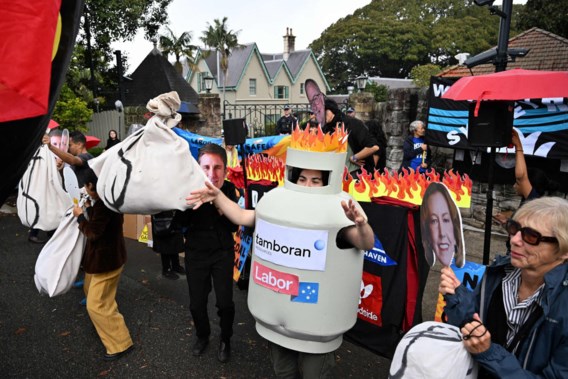When Anthony Albanese won the 2022 elections in Australia and succeeded Scott Morrison as prime minister, he promised to make a green turn. “Together we can end the climate wars,” the Social Democrat and leader of the Australian Labor Party said immediately after his election victory. The country – which remains the second-largest exporter of coal – would become a “renewable energy superpower”, according to Albanese. The contrast with Morrison, who once caused a stir by bringing a lump of coal to parliament, was stark.
But two years later, that green coat of arms has already lost some of its shine. And in presenting its long-term natural gas strategy on Thursday, the Australian government once again made clear that it is not prepared to leave rich reserves of fossil fuels in the ground. The country wants to continue tapping into new sources of natural gas, the government announced, and “natural gas will remain an important source of energy,” said minister responsible Madeleine King. Not only until 2050, but “also beyond”.
Investments in new projects should keep natural gas affordable for Australians themselves, but also – and above all – help protect the country’s position as the world’s second largest exporter of liquefied natural gas (LNG). The US is the largest. Since 2015, Australian exports have more than tripled (+240 percent), according to figures from the International Energy Agency (IEA). Last year, about a fifth of global LNG was shipped from Australia. It was thus able to benefit from the high gas prices, which certainly spiked after the Russian invasion of Ukraine.
The question is whether the economic ambitions can be reconciled with the climate promises of the Albanian government. Australia sees its famous coral reefs threatened by global warming and, like many other countries, wants to be climate neutral by 2050. Natural gas has helped phase out power generation from coal (which has a greater climate impact than natural gas) over the past two decades, but saw its own emissions rise by 66 percent, IEA data shows.
Natural gas already accounts for a fifth of Australia’s total CO₂ emissions. “Replacing one fossil fuel with another is not a transition to clean energy,” Gavan McFadzean of the nature organization Australian Conservation Foundation responded in a blog about the government plans. Australian professor Bill Hare points out to the BBC that natural gas was responsible for the largest increase in CO₂ emissions over the past decade. Hare finds it hardly credible that tapping into new sources is compatible with the promise to reduce net greenhouse gas emissions to zero by 2050. And he’s not the only one with doubts. Three years ago, Chris Bowen, Labor’s climate specialist, called former Prime Minister Morrison’s plans to invest extra in natural gas to get out of the Covid slump “deception.” The same Bowen is today Minister of Climate.
In ‘De Grote Markt’, the economics editors delve daily into a remarkable movement in the economic world.


